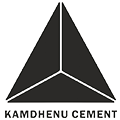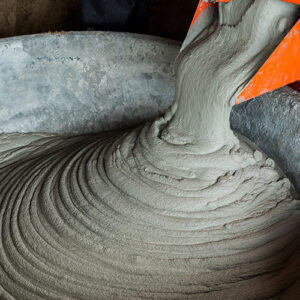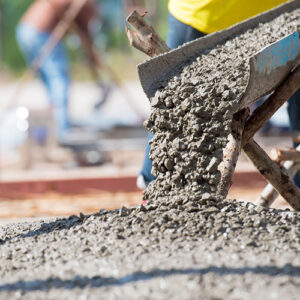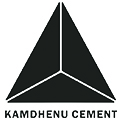Kamdhenu Cement
After being introduced in 2002, Kamdhenu cement quickly saw great success. Modern production facilities and fully-equipped labs are available at Kamdhenu, an ISO 9001:2008 recognized business. The group’s total annual manufacturing capacity is now at 1.5 million tones, but that capacity will soon increase to 3 million tones.
Our high-quality product is on par with the industry’s top suppliers and is appropriate for all kinds of heavy-duty construction, such as High rise buildings, bridges, factories, canals, dams, etc.
One of the most crucial construction materials, cement, is a binding agent that sets and hardens to cling to structural components like stones, bricks, tiles, etc. An extremely fine powdered substance known as cement is often composed of calcium, silicon, aluminum, and iron ore; however, it can also contain other materials, including shells, chalk, marl, shale, clay, blast, etc.
In cement production facilities, the raw materials are transformed and heated to create a rock-hard substance, which is then crushed into a fine powder to be sold. When cement and water are combined, a chemical reaction occurs that creates a paste that sets and hardens to bond the various construction ingredients together.
A crucial component of the urban infrastructure is cement. It is used to bind the construction blocks together to secure the infrastructure and to manufacture mortar and concrete. Cement is formed of concrete, water, and lime aggregate, whereas cement is built of concrete, water, sand, and gravel blended in certain quantities.
Both of these are utilized to create beautiful patterns, fill or seal any gaps, and bind pebbles, stones, bricks, and other construction components.
Types of Cement
Ordinary Portland Cement (OPC)
Portland Pozzolana Cement (PPC)
Portland Slag Cement (PSC)
Manufacturing Process
| Grade/Prop. | OPC | PPC | PSC | IS 8112 | KAMDHENU | IS 1489-1991 | KAMDHENU | IS 445-1989 | KAMDHENU |
|---|---|---|---|---|---|---|---|
| Fineness (M^2/kg) | 225 | 320-350 | 300 | 350-400 | 300 | 350-400 | |
| SETTING TIME (Min) | |||||||
| IST not less than | 30 | 80-120 | 30 | 80-120 | 30 | 80-120 | |
| FST not more than | 600 | 150-180 | 600 | 150-180 | 600 | 150-180 | |
| STRENGTH (MPa) | |||||||
| 3 Days (min) | 23 | 25+ | 16 | 20_+2 | 16 | 20_+2 | |
| 7 Days (min) | 33 | 35+ | 22 | 30_+2 | 22 | 30_+2 | |
| 28 Days (min) | 43 | 45+ | 33 | 45_+2 | 33 | 45_+2 | |
| EXPANSION (mm) | |||||||
| Lechatatelier not more than | 10 | 44563 | 10 | 1.5 | 10 | 44595 | |
| Autoclave not more than | 0.8 | 0.05 | 0.8 | 0.05 | 0.8 | 0.05 | |
| CHEMICAL PROPERTIES | |||||||
| Loss on Ignition max.(%) | 5 | 2-2.5 | 5 | 2.5-3 | 5 | 2.5-3 | |
| MgO (%) | 6 | 2-3 | 6 | 2-2.5 | 5 | 2.5-3 | |
| Chloride (%) max.td> | 0.1 | 0.03-0.05 | 0.1 | 0.03-0.05 | 0.1 | 0.03-0.05 | |
| Sulphate (%) max. | 3 | 2-2.5 | 3 | 2-2.2 | 3 | 2-2.5 | |
Properties of Good Cement
- High strength.
- Has great versatility.
- Great dampness, safe.
- Hardens easily
- Great building material
Highlights of Kamdhenu Cement
Kamdhenu Cement is made using high-quality cement and adds extra strength to the structure.
Due to our extensive dealer network, Kamdhenu Cement’s best-quality cement is widely accessible at affordable prices.
Due to the structure’s strong initial strength, it reduces both construction time and expense.
We promise speedy and efficient delivery to every region of the nation due to the fact that our production facilities are spread out across India. Kamdhenu Cement is made using high- quality cement and adds extra strenght to the structure. It reduces both construction time and expense. We promise speedy and iitial strenght, it reduce both



